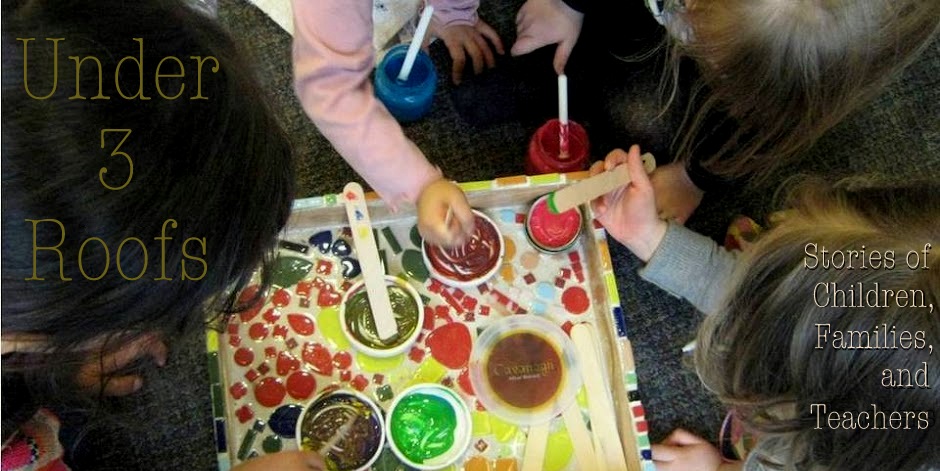What do we mean when we say "image of the child"?

The image of children that the educators and families in Reggio Emilia, Italy hold is quite radical. It may sound ordinary to say that children are whole people, that they are protagonists of their own lives, that they can be in control of their own learning. It's not. If you go to a local playground, watch parents and their children, and try to infer what they believe about children, you'll find that most of us act as though we think children are out of control, that
without adult reinforcement and coaching
they will be unkind, in danger or that they won't know what or how to play.
Here, we try to let our image of the child guide us in our work. When a teacher says to two children who are not yet two years old “What do you think we should do to solve our problem?” you see what it means to trust children. Teachers all over the world who are inspired by those in Reggio Emilia are struggling to define our image of the child in these terms.
This year our center-wide intention is “Bringing Our Image of the Child to Our Work”. One way we can see what a center believes about children is to look at how spaces are designed and materials are stored.
For example, in our classrooms:
- three year-olds have a range of art materials available to them at all times.
- Two year-olds use porcelain pitchers to pour milk at snack.
- One year-olds carry around framed family portraits and have access to musical instruments.
Each team coordinator took some time to visit another classroom and reflect on what the space communicated about how the inhabitants see children. We used a protocol that invited us to think about how we described our image of the child back in September. (See the inset list). Then we came together at our monthly team coordinator meeting to share feedback.
Over and over again, teachers told us that they could see that teachers believe that “Children are capable and deserving of respect.” Some of the examples people shared:
- "T2N did an amazing job with their mini-atellier, and all around the room I saw spaces for collaboration... The message was 'I trust you with tape all the time.' The forks and spoons were out where kids could get them when they need them."
- "T1S also shined... They took all the railings off a climber, which I’ve never seen anyone do before".
- "Everything was available! There were no gates to bathroom, plants and fish bowl are available to children."
- "The [P1] room gives [the children] the opportunity to explore or confront the rigid constraints of materials. You could see that all toys are props for play".
We asked teachers about what parts of our image were harder to see in classrooms.
This could be because of our own biases and agendas as “lookers” or because of what was there in the environment. We heard it was harder to see:
- "That children are constantly in relationship to people and materials. I could see notebooks and I know that certain things happen, but I couldn't see it in the environment."
- "Partnership with families. I could see family photos, but does that really tell about partnership?... I didn't feel like I saw partnership."
- "It was challenging to see an emphasis on process over product in the infant room, since babies don’t “create” in the same ways that invite us to concentrate on the product."
It was clear that teachers really appreciated the feedback, and the glimpses they got in to each others' classrooms. As teachers, we often find that we have “our heads down”. We’re so focused on our own tasks, our own classrooms, that it may be a few days or weeks before we notice the documentation or new climber down the hall. This is part of why we love opportunities to really see what each other are thinking and working on: weekly provocations for teachers, this blog, our annual showcase, and our hallways full of documentation are opportunities for seeing this place through someone else’s eyes.
Grounding our observations in our image of the child seemed to help us formulate our feedback, and translate it immediately into changes in the room. Right away, teachers seemed to see their own rooms differently, and the changes that some people made in the following days and weeks were made because they looked at their rooms through the lens of our image of children.
When you first came to PTCC, what could you infer about how we view children?
How do you feel to get or receive feedback from your peers or colleagues?
We didn't have teachers assess our common areas. (The piazzas, outdoor space, grown-up bathrooms and the yard) Do you have any feedback about them?



